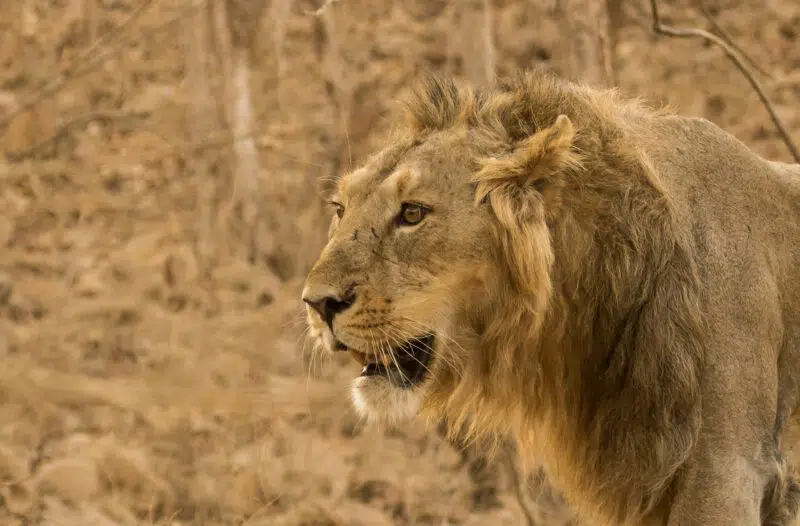Welcome to A Detailed Comparison of Lion vs. Rhino – Who Is Superior?
Regarding the world of wildlife and safari animals, two giants stand out among all the others – lions and rhinos. But which one is truly superior?
Today we’ll explore this age-old question by looking at various aspects across both species, from strength and size to habitat preferences and behavior. You want to use this thrilling comparison between nature’s ferocious apex predators!
Want to jump ahead? Click below
Describing The Two Animals
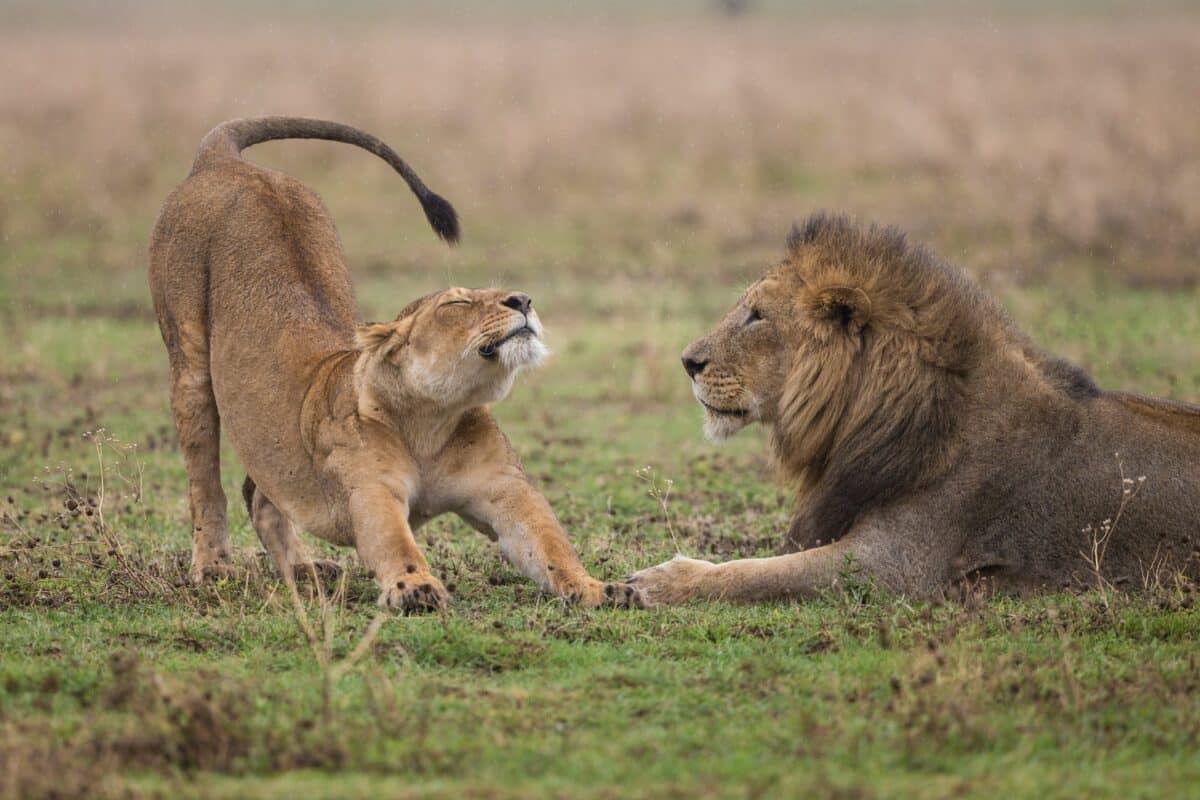
Lions:
Regarding wildlife and safari animals, few stand out more than lions and rhinos. Lions are large cats with muscular bodies, short fur, and a characteristic fur mane around their neck and head. They typically live on the African plains in feelings of pride of up to 30 individuals, hunting for gazelle, antelope, buffalo, wildebeest, and other medium-sized prey. Lions have excellent eyesight, sharp hearing, and a mighty roar that can carry for miles.
Rhinos:
Rhinos are large mammals with thick skin covered by tough hair layers. They have two horns on their heads which can be used to defend themselves from predators or as tools to dig up food during drought. They typically inhabit grassy savannas or swamps in small herds of up to seven individuals. Rhinos are herbivores who primarily feed on leaves and vegetation but will also eat fruits and berries when available.
You might also like to See a Tiger Attacking an Elephant.
Exploring The Age-Old Question Of Which One Is Superior
The age-old question of which species is superior has long been debated among lion and rhino enthusiasts. Regarding strength, size, speed, intelligence, and habitat preferences, certain aspects make each species better suited to its environment.
Physical Attributes Of Lions And Rhinos
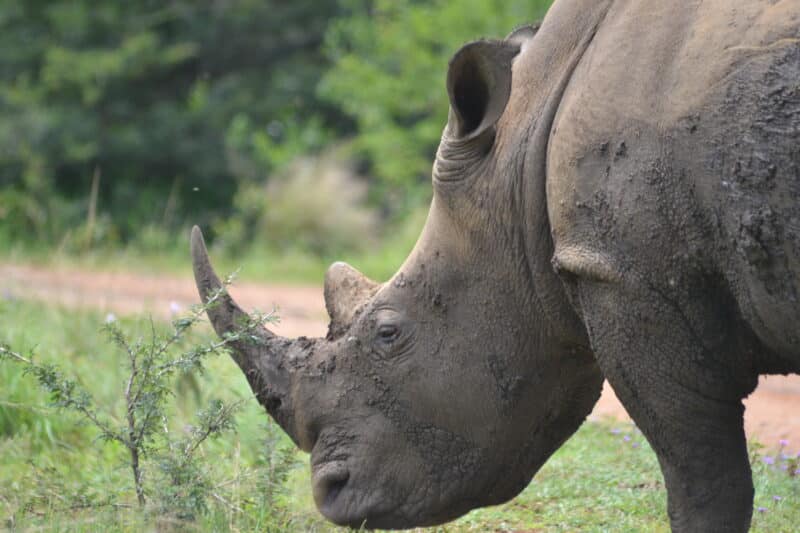
Lions are the second-largest cat family member, male adults weighing up to 250 kg (550 lbs) and measuring 3 meters long. Lioness usually weigh between 120-182 kg (265-400 lbs). Both sexes possess a thick mane that grows darker and fuller as they age, giving them an instantly recognizable appearance in nature. On average, lions can sprint up to 50 mph for short distances and are powerful jumpers too!
Rhinos are easily distinguished by their horned snouts and large bodies. They generally weigh around 1,000–3,000 kg (2,200–6,600 lbs), making them one of the largest land mammals in the world. The black rhino is notably larger than white rhinos, with males reaching up to 2m (7ft) tall at shoulder height and lengths of 3m (10ft). Likewise, black rhinos also have remarkable speed – reaching 40 mph when running.
A very interesting alternative to discover more about Puma vs. Rhino.
Comparisons Based On Power And Size

Regarding physical strength and size comparisons between lions and rhinos, it can be difficult to conclude as both species possess unique physical attributes that make them well-adapted predators in their respective environments.
However, we can say they are mighty: lions boast immense strength and can drag prey easily and take down the game they are, while rhinos use their massive size and horns to quickly take down the game.
When comparing solely based on size, however, there is no doubt that the rhino reigns supreme due to its incredible massiveness – they often outweigh lions 4 or 5 times over! Ultimately, power versus size depends entirely on which species you’re looking at; when it comes to the lion vs. rhino debate, neither animal truly has a clear advantage over the other regarding strength or size.
Natural Habitats Of Lions And Rhinos
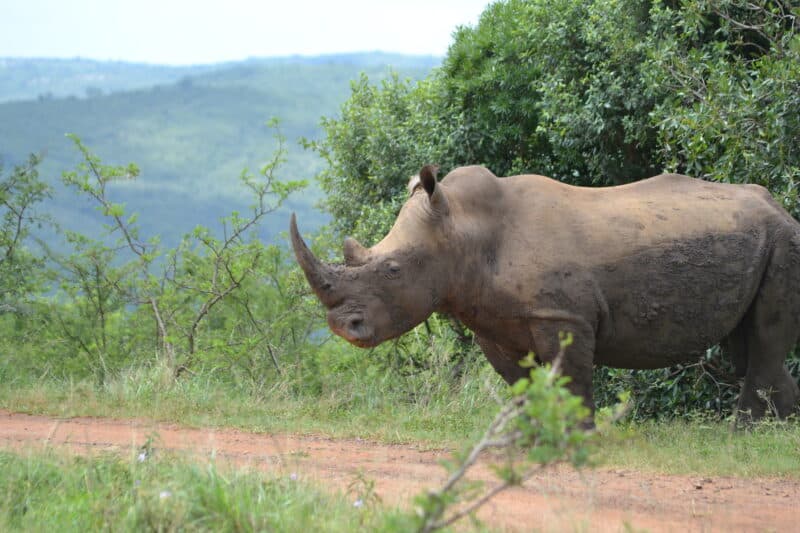
Lions are typically found in savannas, grasslands, forests, and scrub forests across sub-Saharan Africa and India. They prefer areas with tall grass, trees, and brush for cover and Stalking prey. Rhinos are found in various habitats across parts of Africa and Asia, including grasslands, rainforests, swamps, rocky areas, wetlands, and mountain regions. Generally speaking, they prefer thick vegetation to hide from potential predators.
Environmental Factors Of Habitat
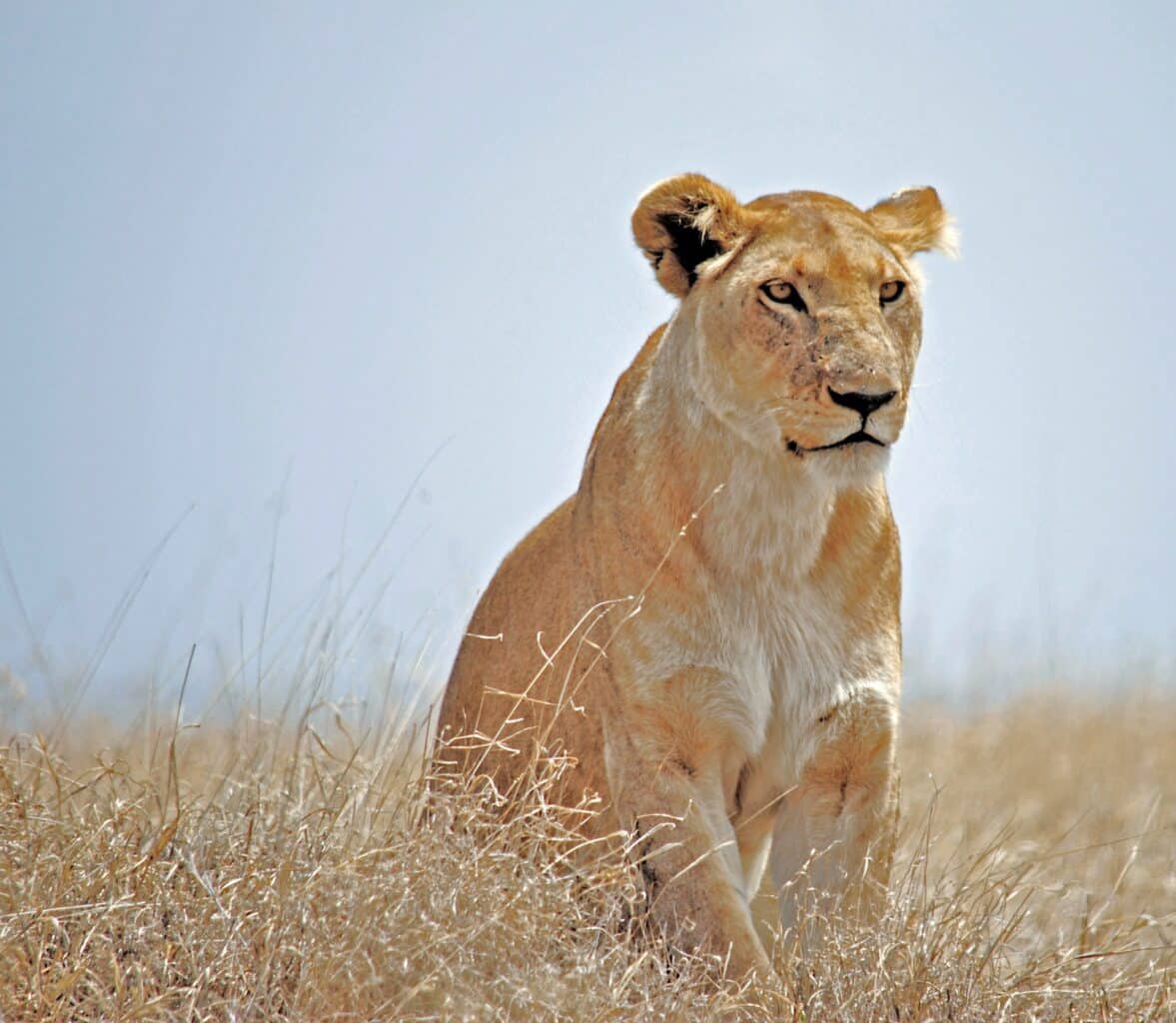
The two species have very different needs when selecting their ideal habitats. Lions need access to large open spaces and the protection of tall grass or trees for hiding during hunts or other activities requiring stealth.
On the other hand, rhinos choose habitats with thick vegetation for camouflage purposes and access to food sources such as leaves, shoots, fruit, roots, and bark, which form their primary diet. In addition to these environmental needs, both species also require an adequate water supply, either directly in the form of rain or close by rivers or lakes, to meet their daily hydration requirements.
The climate also plays a role in choosing a suitable habitat; areas that experience high temperatures will not be eligible homes for either species due to their increased need for shade or coolness during the hottest times of the day.
Hunting Techniques
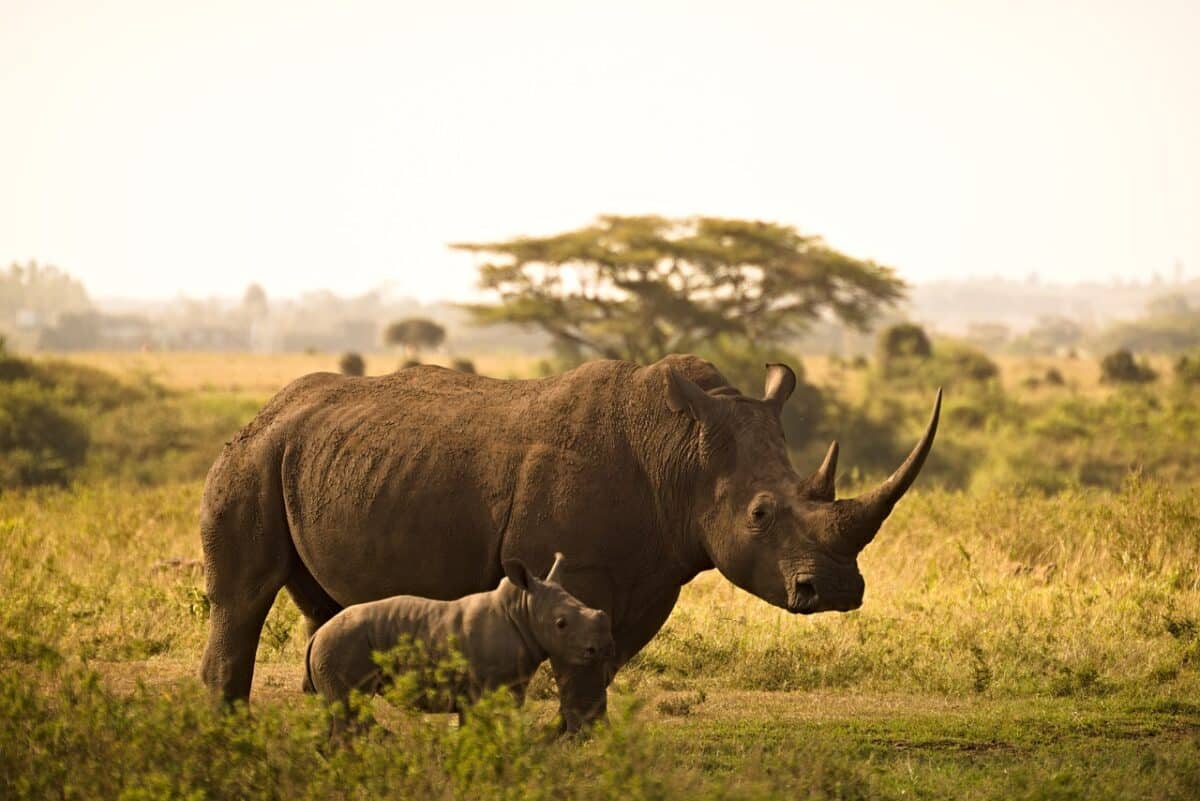
Hunting Tactics Used by Lions and Rhinos hunting tactics differ significantly due to their size, speed, and natural predatory behavior. Lions are fast, agile hunters that use teamwork to take down prey in large groups. They typically employ a ‘stalk and ambush’ strategy where they silently stalk their target before quickly pouncing on it upon the right opportunity.
Conversely, rhinos are slower and less agile but rely heavily on brute force to catch their prey. They typically employ an ‘intercept attack’ where they move towards the noise source or movement to single out the target from a herd if necessary.
Dietary Habits
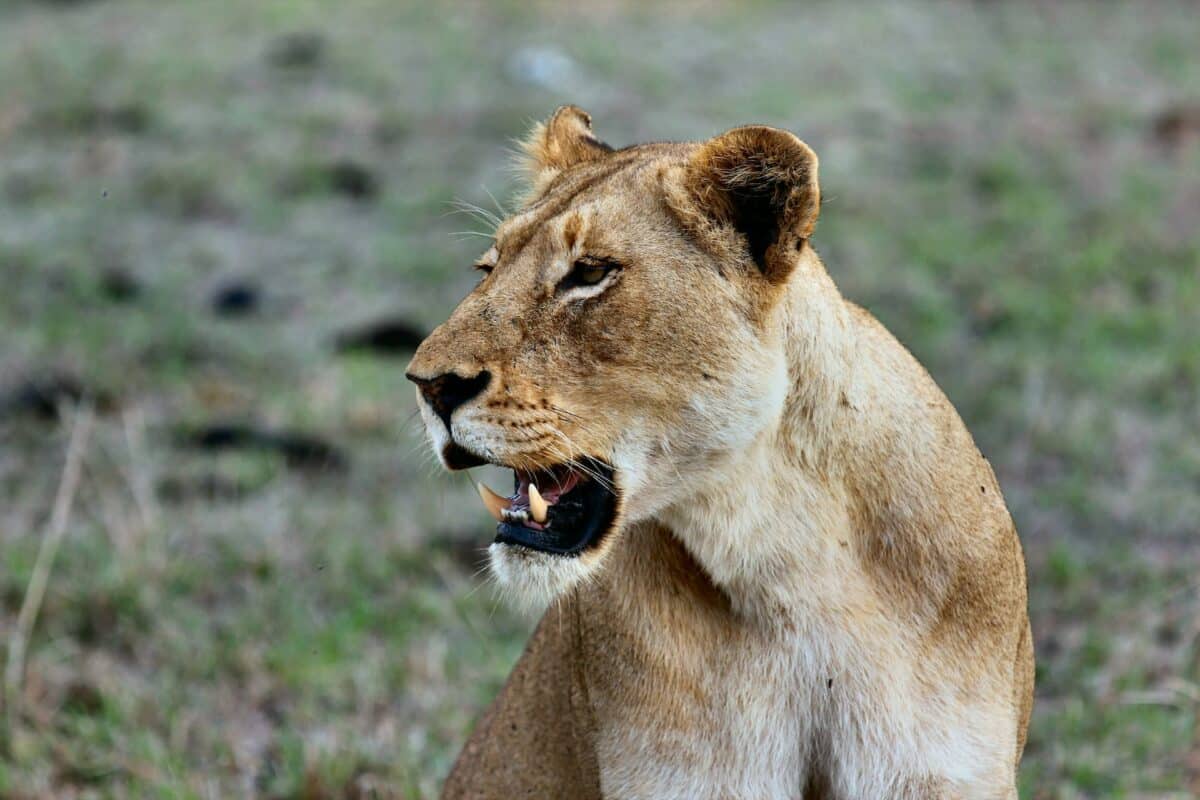
Lions and rhinos share several characteristics as well as differences in their diets. Lions are carnivorous, meaning they specialize in consuming meat. They typically hunt large prey, such as antelopes, wildebeest, zebras, and occasionally elephants. Lions have been known to eat smaller predators, such as cheetahs or leopards if the opportunity arises.
Contrary to popular belief, lions also scavenge for food quite frequently. Lions typically spend 15-20 hours a day resting and sleeping and the remainder of their time searching for food and socializing with other pride members.
In contrast, rhinos are strictly herbivores, primarily dining on a menu of grasses, shrubs, leaves, and twigs, with the occasional fruit as a side dish. They’re more like ground-level grazers than tree-climbing browsers, preferring to chow down on vegetation closer to the earth.
While they don’t have a particularly high water requirement, rhinos do partake when it’s available, and on hot days, they aren’t averse to cooling off by taking a mud bath. Unlike lions, who are known for their pack hunting, rhinos are typically solitary or found in small groups, covering extensive territories as they forage for sustenance or seek potential mates.
These animals exhibit unique adaptations to secure the nutrients they need for survival, but there’s a striking difference. Lions rely on their long canine teeth to effectively tear apart prey, while rhinos lack this specialized dental equipment. Instead, they count on their powerful jaws and sharp horns for defense against predators or threats.
Despite these distinctions, both these creatures hold vital roles as apex predators within their ecosystems, contributing significantly to the delicate balance of nature’s intricate web of life.
Social Dynamics In Groups Of Each Animal Species
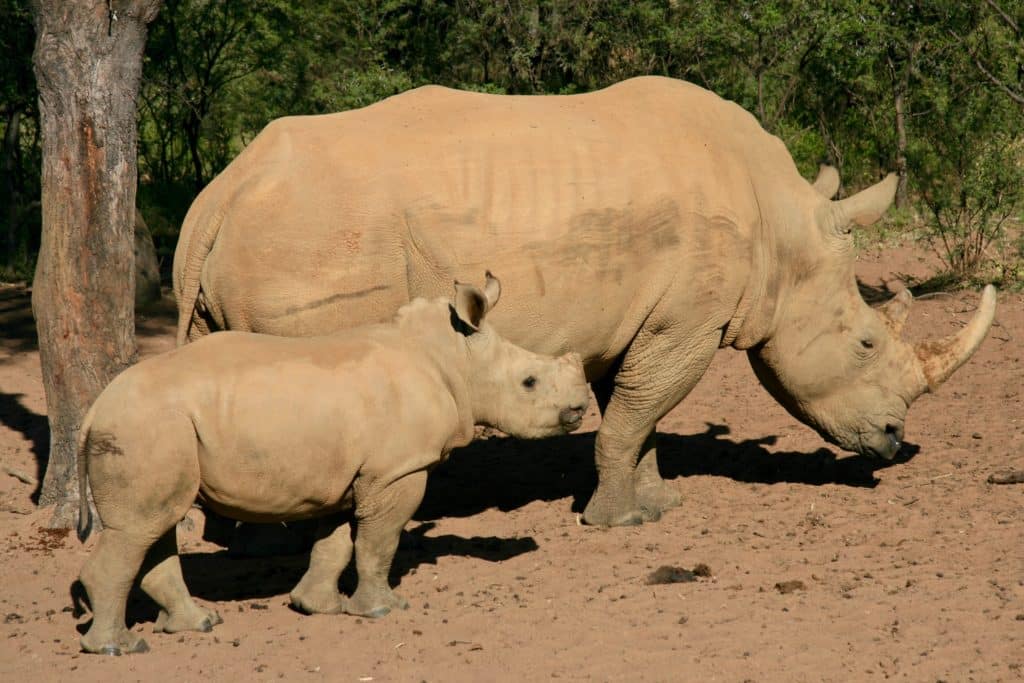
Both lions and rhinos have highly developed social systems with strict hierarchies determining the power order among individuals within their species.
Regarding lions, pride is typically composed of related females and offspring, led by one or two dominant males who protect them from predators such as hyenas or rival pride.
Check out An extraordinary hyena attack.
Rhinos also have complex social dynamics as they usually live in herds of related individuals, such as mothers with young calves or mature bulls vying for dominance based on strength and size. Such social dynamics ensure survival within each species as numbers often lead to success when predators attempt to take out members of either group.
Wrapping Up with Lion Vs. Rhino
After considering both species’ strength, size, habitat preferences, and behavior, it’s clear that lions and rhinos are two formidable apex predators, and both have an essential role in their ecosystems.
While different in many ways, these animals are magnificent and awe-inspiring creatures. Ultimately, there is no definitive answer to which one is truly superior – but this debate can help motivate us to appreciate and conserve wildlife for future generations.
Thanks for following along with us! Next up, Lion Vs. Puma, Lion and the Pitbull, and Jaguar vs. Rhino.
- Bald Eagle Family Expand Their Nest In California - April 24, 2024
- Firefighter Saves Abandoned Kittens Found Cuddling In Hoses - April 24, 2024
- Dolphins Get High Playing Catch With A Pufferfish - April 24, 2024

